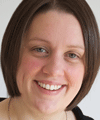Tuesday, 10 May 201608:00 | Registration | |
Approaches to Imaging, Assay Development and Data Analysis for Phenotypic Drug Discovery | | Session Chair: Steven Titus, Staff Scientist, NIH - NCATS, United States of America |
| | 09:30 |  | Keynote Presentation Phenotypic Drug Discovery with Open Source Software Tools
Marc Bickle, Head of Technology Development Studio, Max Planck Institute of Molecular Cell Biology and Genetics, Germany
Phenotypic drug discovery is increasingly used to discover new therapeutic agents against a variety of diseases. These cellular assays will only yield relevant data if care is taken that cells are cultivated in physiological conditions mimicking closely the human body. |
| 10:15 | Towards Understanding Phenotypic Readouts - Utilizing Multiple Types of Chemical and Biological Data to Rationalize Compound Action
Andreas Bender, Lecturer, The University of Cambridge, United Kingdom
In our work, we explore how chemical and biological information from different domains -such as ligand-target prediction, microarray readouts, and RNA-Seq information - can be used separately, or in combination, in order to understand the mode of action of a compound (such
as a hit from high-content screening) in greater detail. | 10:45 | Coffee & Networking in Exhibition Hall | 11:15 | Single Cell Analysis for HCS
Thierry Dorval, Group Leader, Servier, France
High content imaging platforms are giving the opportunity to monitor cellular phenotype at the level of individual object. We present case studies where heterogeneity is used at its advantage to extend phenotypic readouts. | 11:45 | Phenotypic Screening with iPSC-Sensory Neuron Excitability Assays
Darren Cawkill, Associate Director, Pfizer, United Kingdom
This presentation will provide an overview of phenotypic assay development and validation using both ‘normal’ and patient-derived hiPSC-sensory neurons; together with a summary of ongoing chemogenomics screening initiatives aimed at new target identification for hyperexcitability disorders. | 12:15 |  Technology Spotlight: Technology Spotlight:
Introducing the NEW Thermo Scientific™ CellInsight™ CX7 HCS platform
Maxime Mioulane, Field Application Scientist, Thermo Scientific
Discover the latest confocal imaging system from Thermo Scientific, capable of 7-channel fluorescent or confocal, and 5-channel bright-field imaging, the CellInsight CX7 provides all- around performance. With software and laser-based autofocus, this integrated system allows higher resolution of thicker samples such as tissues and organoids.
| 12:30 | Lunch & Networking in Exhibition Hall | 13:30 | Poster Viewing Session | 13:30 |  Free Workshop Free Workshop
Quantitativ4e Image Analysis on the Thermo Scientific™ CellInsight™ CX7 HCA System using Studio 3.0 Software
Maxime Mioulane, Field Application Scientist
| |
Screening and Analysis of 3D Models | | Session Chair: Thierry Dorval, Group Leader, Servier, France |
| | 14:00 |  Technology Spotlight: Technology Spotlight:
Signals - Cloud based High Performance Computing for High Content Imaging
Martin Daffertshofer, Director Strategic Marketing Imaging Informatics, Perkin Elmer Cellular Technologies GmbH
With new instruments such as Opera Phenix High Content Imaging is rapidly moving towards a new area of phenotypic screening. Besides HCS multiple other imaging modalities (i.e. Quantitative Pathology and In Vivo Imaging) starts to become core technologies in drug discovery. We will discuss how cloud based high performance computing and storage provided by Perkin Elmer’s Signals supports multiple aspects such as image management and analysis and high content data profiling.
| 14:15 | | 15:00 | Complex Tissue Models that Mimic the Tumour Microenvironment, Heterogeneity, Invasion, Drug Sensitivity and Progression of Cancers
Matthias Nees, Group Leader, University of Turku, Finland
This presentation will demonstrate the use of statistical and mathematical algorithms to quantitatively assess the most relevant and significant morphometric changes in tissue architecture upon drug exposure and genetic modifications. | 15:30 | Coffee & Networking in Exhibition Hall | 16:00 | Imaging in 3 Dimensions; Paradigms and Pitfalls
Steven Titus, Staff Scientist, NIH - NCATS, United States of America
Three dimensional imaging and analysis are becoming standard practice within the field of High Content Imaging. During the presentation, I will summarize many of the current trends and observations encountered with 3D imaging experiments from a practical perspective. | 16:30 | 3D Organoids-Based High Content Screening
Xavier Gidrol, Laboratory Director, CEA Grenoble, France
We will describe the development and use of MEMS (MicroElectroMechanical Systems) to systematically analyze the phenotypic consequences of genetic perturbations (RNAi-based HCS) in 3D organoids cultures. More specifically we address the following issue: What are the genetic and microenvironmental determinants that control prostate carcinogenesis? | 17:00 | Cell-based Assay Development and Screening – A Parallel Approach using Recombinant, Primary and 3D Models
Sheraz Gul, Head of Assay Development & Screening, Fraunhofer-IME SP, Germany
The recent changes in the approaches to assay development and high throughput screening in early stage drug discovery will be described. Our projects that make use of assays with a variety of reagents including recombinant, primary and 3D models will subsequently be discussed. | 17:30 | Drinks Reception in the Exhibition Hall | 18:30 | End of Day One |
Wednesday, 11 May 2016 |
High Content Analysis Methods and Tools | | Session Chair: Paul Andrews, Senior Scientist, University of Dundee, United Kingdom |
| | 09:30 | | 10:15 | High Content Imaging in Chronic Kidney Disease
Douglas Ross-Thriepland, Senior Scientist, Astrazeneca, United Kingdom
The application of high content imaging and phenotypic screening in order to identify novel targets for the treatment of diabetic nephropathy associated kidney damage. | 10:45 | Coffee & Networking in Exhibition Hall | 11:15 | 2D and 3D High Content Assays of Tumor Cell Invasion
Maria Montoya, Head, National Center for Cardiovascular Research, Spain
2D cellular assay to study the ability of fibroblsts to organize the extracellular matrix and a 3D cell invasion assay of cancer associated fibroblasts co-culture with tumor cells aimed to screen for inhibitors of tumor cell invasion will be presented. | 11:45 |  Technology Spotlight: Technology Spotlight:
siPOOLs – RNAi that works
Catherine Goh, Head of Product Development and Marketing, siTOOLs Biotech GmbH
Current RNAi screening data sets are dominated by off-target effects, limiting their interpretation to a small number of very strong and frequently known hits. siPOOLs are complex pools of selected siRNAs which prevent off-target effects and yield reliable phenotypic information.
| 11:50 | Needs and Requirements on Automated Cell Culture Processes
Andreas Traube, Head of Department, Laboratory Automation and Biomanufacturing Engineering Fraunhofer IPA, Germany
The world of cell culture automation is subject to significant changes in order to meet the requirements of newly developing protocols using complex cell models. This talk will outline the main principles in cell culture automation, highlight the challenges for future automation tasks and point out smart ways of implementing new protocols. | 12:20 | Lunch & Networking in Exhibition Hall | 13:00 | Poster Viewing Session | 13:35 |  Poster Prize Presentation Sponsored by ePosters Poster Prize Presentation Sponsored by ePosters
| 13:40 |  Technology Spotlight: Technology Spotlight:
ULTImate YChemH™: an unbiased target ID method
Marie-Edith Gourdel, Chemistry Director, Hybrigenics Services
ULTImate YChemH ™ is an unbiased chemical biology method for direct targets identification. Experience. It is a support to decipher the mechanism of action, study “off-target” effects and consider drug repositioning. It benefits from Hybrigenics' worldwide known optimized and quality-certified ULTImate Y2H ™ screening platform with more than 15 years.
| 13:45 | High Content Analysis Strategies for Academic Research
Sebastian Munck, Bio Imaging Core Leader, KU Leuven, Belgium
I will present the application of advanced image analysis strategies to tackle the uncommon samples for quantitative high content analysis like giant unilamellar vesicles and cilia. | |
Phenotypic Screening | | Session Chair: Maria Montoya, Head, National Center for Cardiovascular Research, Spain |
| | 14:15 |  | Keynote Presentation Phenotypic Drug Discovery – The Move from High Content to High Impact Screening
Beverley Isherwood, Associate Director & Head High Content Biology, Innovative Medicines, AstraZeneca, United Kingdom
In recent years, phenotypic drug discovery (PDD) has received a lot of attention in industry and academia and the scientific community has started to believe that phenotypic readouts nicely complement the more conventional approaches of target-based drug discovery (TDD). In this presentation, we will describe our PDD experience from implementing and running this approach over several years, we will review the current status, show the synergies of both approaches, and we will give an outlook on future trends. |
| 15:00 | Bridging the Gap between Academia and Industry at the National Phenotypic Screening Centre
Paul Andrews, Director/Consultant, Stem Cell Solutions Ltd, United Kingdom
The National Phenotypic Screening Centre is a new interdisciplinary drug discovery facility working with industry and academia, driving innovation and creating impact by bringing technology to the biology, in order to tackle disease in humans, animals and plants. | 15:30 | Coffee & Networking in Exhibition Hall | 16:00 | Frequent Hitters: A Challenge for Phenotypic Screens
Christian Parker, Lab Head, Novartis Institute For Biomedical Research, Switzerland
This presentation will review the nature of frequent hitters in biochemical and cell based assay and compare such compounds to gene targets that appear as frequent hitters in genetic screens. | 16:30 | Finding Novel Therapeutic Antibody Targets by Target-Agnostic Phage Display and Phenotypic Screening
Alan Sandercock, Scientist II, MedImmune, United Kingdom
| 17:00 | Close of Conference |
|
